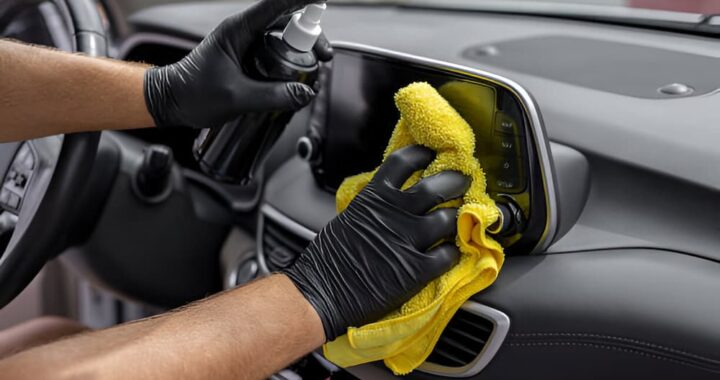Suspension Problems: Symptoms and Repair Tips

The suspension system in a vehicle is crucial for ensuring a smooth and safe ride. It absorbs the shocks from the road, maintains tire contact, and ensures stability and control. However, like any other part of a vehicle, the suspension system can develop problems over time. Identifying and addressing these issues promptly can prevent further damage and maintain the comfort and safety of your vehicle. This blog by Sydney auto removal will discuss common symptoms of suspension problems and provide tips for repair and maintenance.
Common Symptoms of Suspension Problems
Uneven Tire Wear
Uneven tire wear is one of the first signs of suspension problems. When the suspension system is not functioning correctly, it can cause the tires to wear unevenly. This uneven wear can be seen as bald spots or excessive wear on one side of the tire. It indicates that the suspension is not holding the vehicle evenly, leading to misalignment and poor contact with the road. Regularly checking your tires for uneven wear can help identify suspension issues early.
Excessive Bouncing
If your vehicle continues to bounce after going over a bump or dip, it is a clear indication of a suspension problem. This excessive bouncing is usually caused by worn-out shock absorbers or struts. These components are designed to absorb the impact of the road, and when they fail, the vehicle cannot stabilize quickly. Testing this by pressing down on the hood of your car and observing the rebound can help determine if the shocks or struts need replacement.
Drifting or Pulling During Turns
A vehicle that drifts or pulls to one side while turning can indicate suspension issues. This problem is often caused by failing components such as ball joints, tie rods, or control arms. When these parts wear out, they cannot maintain proper alignment and stability, leading to a dangerous driving condition. If you notice your vehicle pulling to one side during turns, it is essential to have the suspension system inspected and repaired immediately.
Noises and Vibrations
Clunking or Knocking Sounds
Clunking or knocking sounds when driving over bumps are common symptoms of suspension problems. These noises are often caused by worn-out or damaged components such as bushings, ball joints, or sway bars. The suspension system relies on these parts to keep the vehicle stable and reduce noise and vibration. When they wear out, they cannot perform their function correctly, resulting in unusual noises. Addressing these noises promptly can prevent further damage to the suspension system.
Vibrations in the Steering Wheel
Vibrations in the steering wheel can indicate several issues, including suspension problems. When the suspension system is not functioning correctly, it can cause the steering wheel to vibrate, especially at higher speeds. This issue is often related to misalignment, unbalanced tires, or worn-out suspension components. Regularly checking and maintaining the suspension system can help prevent these vibrations and ensure a smooth driving experience.
Also visit: https://totalcarremoval.com.au/cash-for-cars-sydney/
Repair and Maintenance Tips
Regular Inspections
Regular inspections are essential for maintaining the health of your suspension system. Having your suspension system checked by a professional mechanic at least once a year can help identify and address issues before they become serious. During these inspections, the mechanic will check for signs of wear and tear, leaks, and damage to the suspension components. Early detection and repair can prevent costly repairs and ensure the safety and comfort of your vehicle.
Replace Worn-Out Components
Replacing worn-out components promptly is crucial for maintaining the suspension system. Components such as shock absorbers, struts, ball joints, and bushings wear out over time and need replacement to ensure the system’s proper functioning. Ignoring worn-out components can lead to further damage and costly repairs. Always use high-quality replacement parts to ensure the longevity and performance of your suspension system.
Maintain Proper Tire Pressure
Maintaining proper tire pressure is essential for the health of your suspension system. Overinflated or underinflated tires can cause uneven wear and stress on the suspension components. Regularly check your tire pressure and adjust it according to the manufacturer’s recommendations. Proper tire pressure not only ensures a smooth ride but also prolongs the life of your suspension system. Also read
Avoid Overloading Your Vehicle
Overloading your vehicle can put excessive stress on the suspension system, leading to premature wear and failure. Always adhere to the manufacturer’s recommended load capacity to prevent damage to the suspension components. If you regularly carry heavy loads, consider upgrading your suspension system to handle the increased weight and ensure a smooth and safe ride.
Drive Carefully Over Bumps and Potholes
Driving carefully over bumps and potholes can significantly reduce the stress on your suspension system. Sudden impacts can damage the suspension components and lead to costly repairs. Whenever possible, avoid rough roads or drive slowly and carefully over bumps and potholes to protect your suspension system and ensure a comfortable ride. Read this
Conclusion
Suspension problems can significantly affect the safety, comfort, and performance of your vehicle. By understanding the common symptoms and following the repair and maintenance tips outlined in this blog, you can ensure the longevity and reliability of your suspension system. Regular inspections, prompt replacement of worn-out components, and careful driving habits are essential for maintaining a healthy suspension system. By taking these steps, you can enjoy a smooth and safe ride, keeping your vehicle in top condition for years to come.

 The Role of Automated Testers Over Manual Checks
The Role of Automated Testers Over Manual Checks  Choosing the Right Automatic Detailing Equipment for Your Business
Choosing the Right Automatic Detailing Equipment for Your Business  How Modern Car Seat Adjustment Tools Outshine Their Predecessors
How Modern Car Seat Adjustment Tools Outshine Their Predecessors  The Lifecycle of Vehicle Metal: From Manufacturing to Disposal 2024
The Lifecycle of Vehicle Metal: From Manufacturing to Disposal 2024  Volvo Cars in Englewood, NJ: A Comprehensive Guide
Volvo Cars in Englewood, NJ: A Comprehensive Guide  5 Signs It’s Time to Visit an Auto Repair Shop in Calgary
5 Signs It’s Time to Visit an Auto Repair Shop in Calgary  Exploring London’s Best Butcher Shops
Exploring London’s Best Butcher Shops  Enhance Your Shop Appeal with Sydney’s Best Carpentry Services
Enhance Your Shop Appeal with Sydney’s Best Carpentry Services  A Detailed Look at the Features of the LEGO Technic Mars Crew Exploration Rover
A Detailed Look at the Features of the LEGO Technic Mars Crew Exploration Rover